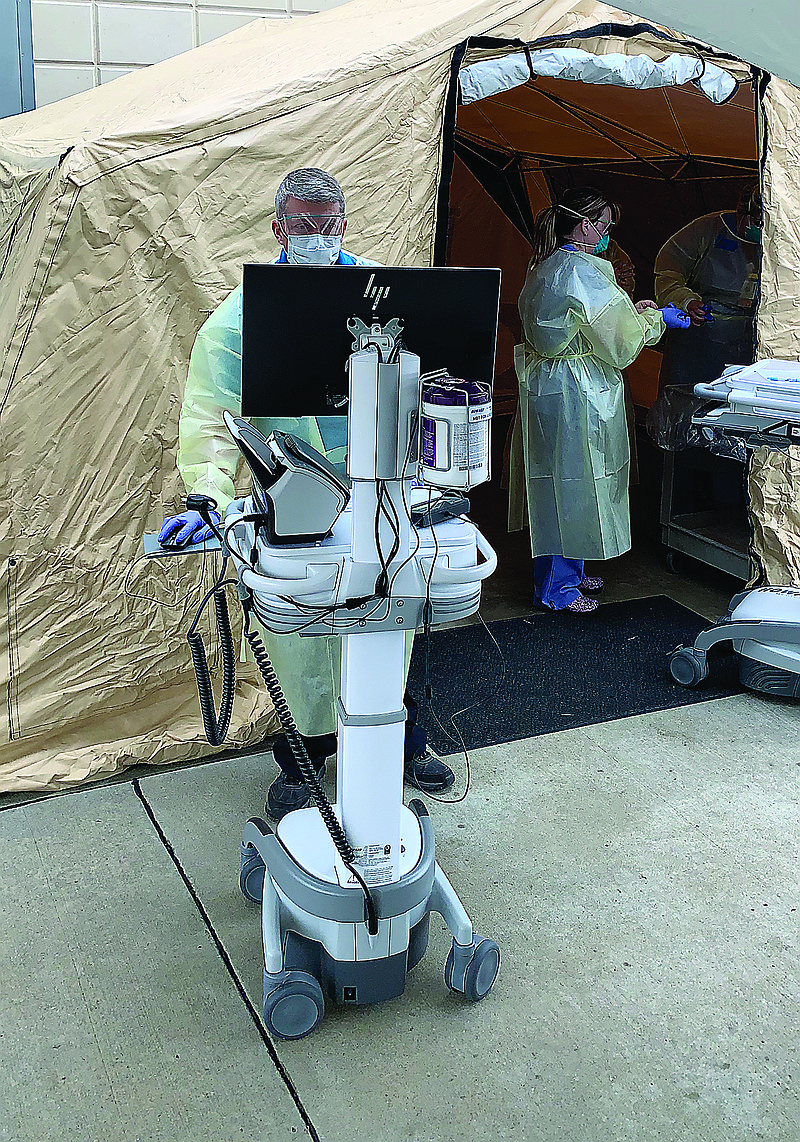Most Missouri employers expect 2020's employment trends to last through 2021, while service jobs and health care are projected to lead regional industry growth in the coming decade, according to reports released by the state's economic research agency.
The Missouri Economic Research and Information Center last week released its 2020 statewide employer survey results that correspond with the economic and workforce report published earlier in the fall.
That economic and workforce report projected that, for the Central Missouri region, food services and drinking places would be the leading growth industry through 2028, in terms of the number of people employed.
That industry was projected to grow 18 percent, by more than 4,400 jobs compared to 2018.
Hospitals followed, with 14.9 percent projected growth, representing 2,380 new jobs.
The central region includes Boone, Callaway, Cole, Maries, Miller, Moniteau, Morgan and Osage counties, among 10 others.
Other top growth industries were projected to include: ambulatory health care services; social assistance; professional, scientific and technical services; administrative and support services; nursing and residential care facilities; non-store retailers; religious, grantmaking, civic and professional organizations; and management of companies and enterprises.
In terms of specific occupations in the central region, MERIC projected people with a high school degree and little experience would see the fastest growth in opportunities as personal care aides, office and administrative support workers, taxi drivers and chauffeurs, home health aides, and food preparation and serving workers.
Associate degrees would open up opportunities as loan interviewers and clerks, restaurant cooks, veterinary assistants and lab animal caretakers, medical assistants and first-line food preparation supervisors.
Bachelor's degrees and above would open up opportunities as software developers, loan officers, financial securities specialists, personal financial advisors and computer systems analysts.
Median wages would be much higher among the jobs that require the most education, but it's expected the most openings will be among the lower-paying jobs.
Many of those lower-paying service industry jobs are among those in the short term hit most by the economic effects of the COVID-19 pandemic.
In addition to that trend being evident in unemployment reports, MERIC's latest employer survey included there had been a 28 percent drop from 2019-20 in the percentage of employers with jobs at low-skill levels requiring a high school degree or less. Employers reported middle- and high-skill jobs decreased 5 percent and 4 percent, respectively.
MERIC also found from its latest employer survey that, "compared to 2019, Missouri employers (in 2020) were more likely to maintain steady levels of employment but less likely to increase."
Employers in metro areas were also more likely to have reported decreased employment levels.
"Employers who significantly increased or decreased employment were then asked if the change was due to the COVID-19 pandemic. Fifty-eight percent said yes, while 42 percent said no. Responses were similar in both metro and non-metro areas, with 59 percent of metro and 56 percent of non-metro employers stating COVID-19 was the reason for the change," according to MERIC.
More than half of employers, 56 percent, expected their employment levels would not change in 2021, though metro area employers were a little more optimistic to see some growth.
When asked how they would add workers, 20 percent of employers told MERIC they would recall furloughed workers or workers from a laid-off list. Compared to 2019, employers said it was more likely they would hire full-time workers instead of part-time workers, and it was also less likely than before that they would hire contract workers or go through a temporary agency.
Employers told MERIC, ahead of the pandemic, the biggest barrier to adding jobs is finding workers with the needed knowledge or skills - and skilled trades businesses, in particular, have the most need for skilled applicants.
Most employers - 86 percent - said they addressed skill shortages last year with on-the-job training. Almost half as many offered a flexible schedule for continuing education or in-house classroom training.
Thirty percent of employers last year opted for online courses - 6 percent less than in 2019. The use of all types of skill shortage- addressing measures reportedly fell, including tuition reimbursement, apprenticeship programs and vocational trainings.
After the pandemic, second to skills shortages, employers told MERIC the biggest barriers to adding jobs included economic conditions - which was less of a cited reason in 2020 compared to 2019 - lack of child care access and lack of transportation access.
The percent of employers who cited government policy or regulations as a barrier to adding jobs decreased 10 percent from 2019-20, falling to 13 percent.
Further down on the list, and separate from the 25 percent of employers who cited "general COVID-19-related issues" as a barrier to adding jobs - employers could select more than one response on the survey - were 8 percent who cited an inability to comply with federal pandemic public health recommendations and 8 percent who cited a lack of personal protective equipment.
MERIC's full employer survey results report is available at meric.mo.gov/media/pdf/missouri-workforce-2020-employer-survey- report.
The full statewide 2020 and regional economic and workforce reports are available at meric.mo.gov/economic-research/mo-regional-economic-reports?utm_medium=email&utm_source= govdelivery.


